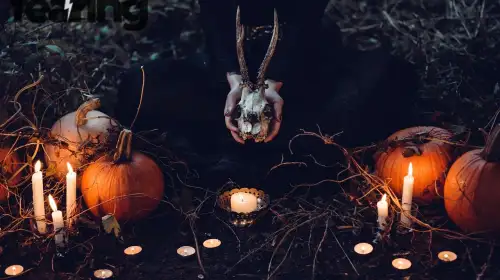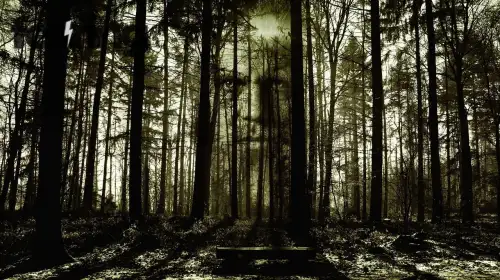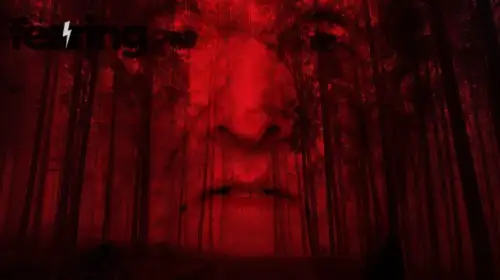Haunted Places have always fascinated the human imagination. From abandoned hospitals and ancient castles to quiet suburban houses, these locations are said to echo with stories that never quite ended. In 2025, fascination with hauntings has only intensified, blending tourism, psychology, and paranormal research into one powerful cultural phenomenon.
Parapsychologist Dr. Dean Radin says, “Haunted Places aren’t just about ghosts — they’re about memory. Every wall, every corridor holds emotional residue.” His observation reflects how people interpret the paranormal not simply as fear, but as connection to something timeless.
Why We’re Drawn to the Unseen
The appeal of haunted sites lies in their tension between beauty and unease. Psychologists suggest that humans are wired to seek safe danger — experiences that trigger fear without actual threat. That’s why haunted tourism thrives.
According to the World Travel Market Report 2025, global “dark tourism” generated over $32 billion, with ghost tours ranking among the fastest-growing categories. Sociologist Dr. Helen Fisher explains, “We enjoy the illusion of risk. A haunted house lets us flirt with mortality while knowing we can still walk away.”
Echoes of History
Many famous hauntings originate from tragedy. Wars, epidemics, and executions often shape the legends tied to Haunted Places. These narratives transform ordinary landmarks into living museums of emotion and folklore.
Here are some of the world’s most documented sites:
| Location | Country | Known For | Historical Context |
|---|---|---|---|
| Tower of London | UK | Ghosts of Anne Boleyn & prisoners | Former royal fortress and site of executions |
| Eastern State Penitentiary | USA | Shadow figures & eerie whispers | One of America’s oldest prisons (1829–1971) |
| Aokigahara Forest | Japan | Spiritual energy & silence | Associated with local legends of spirits |
| Poveglia Island | Italy | Distress calls & fog apparitions | Former plague quarantine site |
| Bhangarh Fort | India | Ruins cursed by black magic | Abandoned 17th-century royal town |
Historian Mary Roach comments, “Haunted Places are where history refuses to be quiet. The past insists on being felt, not just remembered.”
When Science Meets the Supernatural
Researchers studying haunted environments find intriguing natural explanations. Infrasound — low-frequency sound waves — can cause dizziness and dread. Mold spores, carbon monoxide, or magnetic fields can also influence perception.
Neuroscientist Dr. Olaf Blanke from EPFL explains, “Our brains can project presence into empty spaces. The haunting isn’t in the room — it’s in the mind.” Yet even skeptics acknowledge that some experiences remain resistant to scientific analysis, inviting further exploration.
Technology in the Field
Paranormal investigators now use the same technologies as environmental scientists. AI-driven devices track light, sound, and temperature anomalies, while drones map inaccessible ruins.
| Tool | Function | Modern Use |
|---|---|---|
| EMF Meters | Detect electromagnetic changes | Identify wiring or unexplained fluctuations |
| Thermal Cameras | Record heat signatures | Reveal temperature “cold spots” |
| Full-Spectrum Cameras | Capture visible and invisible light | Used in low-light structures |
| EVP Recorders | Collect potential spirit voices | Enhanced with AI noise reduction |
| LIDAR Drones | Scan large ruins | Produce 3D reconstructions of sites |
Investigator Amy Bruni observes, “Tech doesn’t make a haunting real, but it keeps us honest. It shows what’s measurable — and what isn’t.”
Cultural Meaning of Haunting
Across cultures, hauntings represent unfinished business or spiritual imbalance. In Japan, spirits known as Yūrei linger from unresolved emotion. In Mexico, Día de los Muertos honors communication between worlds rather than fear. In Turkey, old mansions called perili köşk are said to house playful, not malevolent, spirits.
Anthropologist Dr. Sarah Bartlett explains, “Haunted Places reveal what each culture believes about the afterlife. They’re not just scary — they’re mirrors of belief.”
Psychological Impact on Visitors
Experiencing a haunted site can evoke awe, melancholy, or even healing. Psychologists studying Haunted Places find that visitors often describe comfort rather than terror, feeling “closer” to lost loved ones.
Clinical researcher Dr. Chris French suggests, “Haunting stories help people process grief. The supernatural becomes a language for emotions that science can’t quantify.”
The Business of Fear
Haunted tourism now merges storytelling with immersive experience. Historic hotels market ghost-themed stays; entire towns host nighttime investigations. The Stanley Hotel in Colorado — inspiration for Stephen King’s The Shining — reports annual occupancy rates above 90% during October.
Marketing expert Lena Ortiz notes, “Haunted travel sells not fear, but authenticity. Visitors want to feel part of something ancient, a mystery bigger than themselves.”
Ethics and Preservation
While tourism sustains many historical sites, it also raises ethical concerns. Some locations connected to trauma risk turning tragedy into spectacle. Responsible operators now emphasize education and memorial context over cheap thrills.
Cultural heritage advisor Dr. Ibrahim Kaya warns, “A haunted site should first be a historical site. If you remove the respect, you lose the truth.”
The Human Element
Even as instruments advance, every haunting remains deeply personal. Many encounters defy measurement but persist in memory. Whether caused by acoustics or emotion, they remind us that human experience extends beyond logic.
As physicist Brian Cox once remarked, “We are all ghosts of stars — made of ancient matter, living in borrowed time.” Perhaps that is why Haunted Places resonate so powerfully: they connect the physical and the poetic, the measurable and the imagined.
FAQ
Q1: Are all haunted places dangerous?
A1: Most are not. Many sites are preserved historical landmarks open safely to the public.
Q2: Can science explain hauntings completely?
A2: Many experiences can be traced to environmental or psychological causes, but some remain unexplained.
Q3: What is the oldest recorded haunted site?
A3: The Roman “Haunted House of Athens,” described by Pliny the Younger in the first century, is among the earliest accounts.
Q4: Why do some people feel energy in old buildings?
A4: Suggestion, atmosphere, and environmental factors can heighten perception and emotion.
Q5: What’s the best way to explore haunted sites responsibly?
A5: Follow local guidelines, respect cultural traditions, and focus on learning rather than provocation.
Sources
World Travel Market Report 2025
Society for Psychical Research Archives
EPFL Cognitive Neuroscience Department




